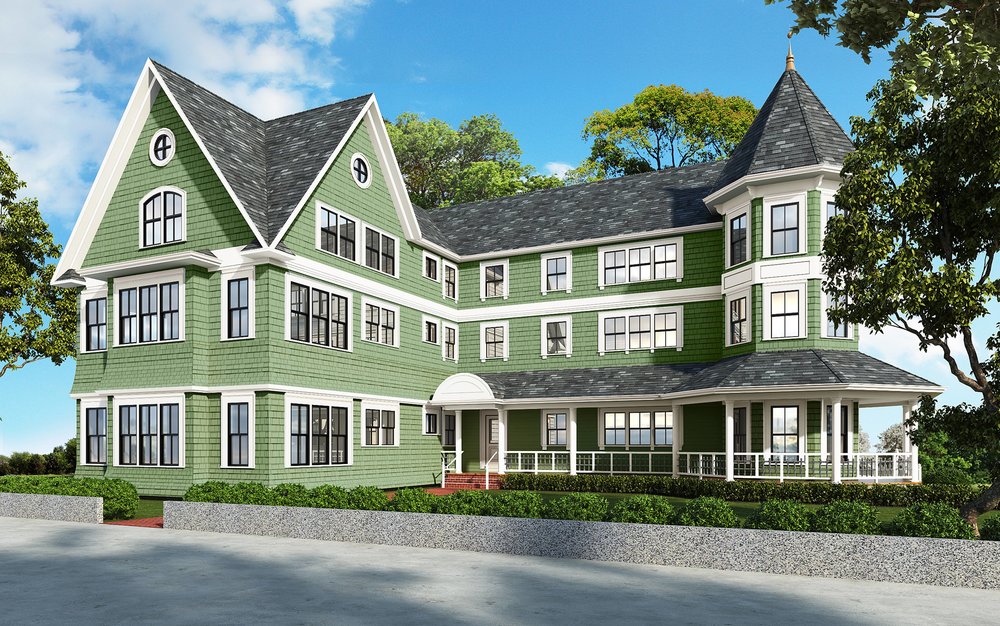- Joined
- Jan 7, 2012
- Messages
- 14,072
- Reaction score
- 22,812
100% affordable apartments on the Pine Street Inn site:
http://www.bostonplans.org/document...lings/3368-washington-street-letter-of-intent
 https://flic.kr/p/2dV6hDP
https://flic.kr/p/2dV6hDP https://flic.kr/p/RxBN7D
https://flic.kr/p/RxBN7D
Development of this lot, 16 Everett Street, in my old neighborhood, has been missed. I have to say I'm sad to see it developed; I always thought the property belonged to the gorgeous Queen Anne next to it. The thing going up here is absolutely massive in every sense of the word - much more imposing than the render makes it seem.
I like the quiet streets of JP left the way they are.
Its not on a quiet street considering the fact that train tracks for the orange line, commuter rail and amtrak are mere feet away. I'll take this project over another boring box of a building any day. Plus, revenue from this project will help to subsidize an eight-unit affordable-housing project the Jamaica Plain Neighborhood Development Corp. is planning nearby
This project above is about a 2 minute walk from an Orange Line T station, replacing what was apparently an empty lot. Isn't this precisely where we are supposed to be encouraging denser housing?
Is it the green building that is being referred to as "hulking" and "absolutely massive"? I admit I haven't seen it in person but I think we have very different definitions.
Of course, for a low-rise neighborhood I am most used to Somerville which has literally double the population of JP in a slightly smaller area, so these "hulking" and "absolutely massive" buildings are sprinkled in out of necessity.
It's hard for me to think that 9 residential units right by the T is too big for, frankly, any neighborhood. What would your solution have been for this parcel FK4?
Yes. It's called context. Go there and wander around Sumner Hill (the next Porchfest would be a good time), and then get back to me. Sorry to be blunt, but you clearly are not familiar with this neighborhood, which has the most sumptuous and eclectic architectural mix of any neighborhood outside of New Orleans' Uptown. Somerville has no neighborhoods that are remotely similar to this; yes, it has areas of originally single family homes but they're the usual Victorian stock, almost always with the whole street developed wholesale, that you see everywhere else around here (Brookline, Ashmont, etc). The fact that the OL was moved into a neighborhood with a large proportion of single family homes that were historically summer cottages is problematic, but does not simply justify assumptions like "well, it's close to the train, so build it up".
What would I have done? I would rather have seen two separate, tasteful buildings, something that appeared less massive, and fit in better with the surrounding architecture. Without that cheesy rocking-chair porch. While imperfect, 266 Lamartine ended up being a pretty decent project that, while large, fit in much better and does not "hulk" and contains 4 units on a much smaller site.
There's few areas that are really unique and perfect in this city and should be left alone; this is obviously one of them. Wigglesworth and Worthington Streets being another; Taft Street in Dorchester being yet another.
....Sorry to be blunt, but you clearly are not familiar with this neighborhood, which has the most sumptuous and eclectic architectural mix of any neighborhood outside of New Orleans' Uptown.
According to Google Streetview, it looks a lot like many other neighborhoods I wander around, particularly some of the side streets in Brookline. I think you are overselling the importance of this road. I was referring to Somerville in terms of low-rise scale, but I have probably walked down 1000 different streets in the immediate metro (and driven down many more!) and this one does not stand out.
At some point I will try to walk down it but I really don't like Jamaica Plain, mainly because I always end up very lost and next thing you know I'm in Mattapan. The area is a true black hole for any sort of logical navigation.
When I think of certain neighborhoods that absolutely need to be protected, I'm defaulting to the North End and Beacon Hill. I believe that most of these old houses also need to be protected, but at the end of the day we have a housing crisis. That necessitates these vacant lots being developed larger than their neighbors if we ever expect to put a dent into this issue. I have a hard time with your sky-is-falling characterization of this building when it looks like pretty much the smallest project posted on this entire website.
I also would repeat that pointing to the proximity of a T station does not simply grant the right to develop whatever you want...
